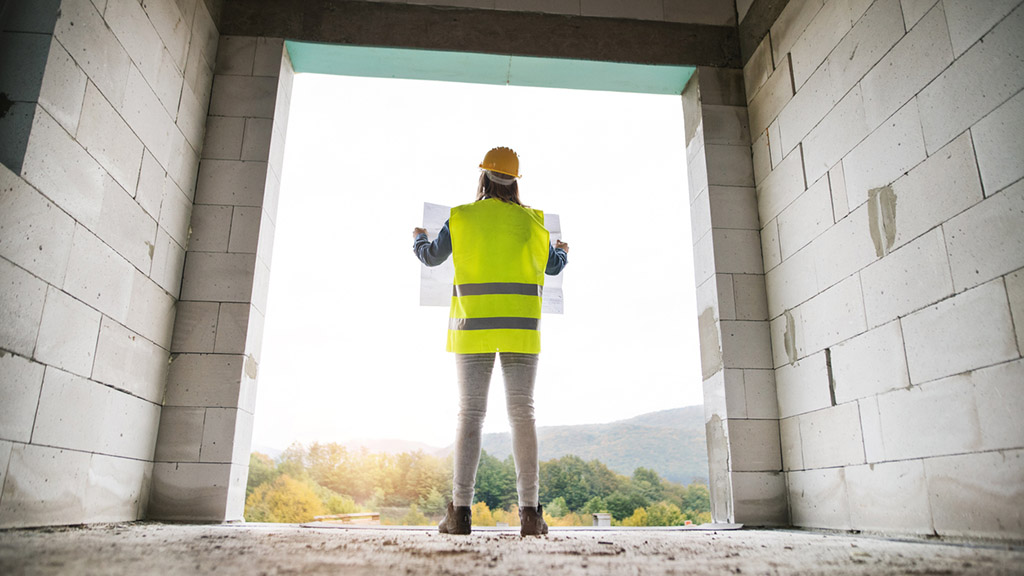The Art and Science of Landscaping in Construction

Imagine a newly constructed building, gleaming and pristine, standing amidst a barren wasteland. The stark contrast feels sterile, uninviting and a bit dystopian. Now, picture the same building nestled within a vibrant tapestry of lush greenery, winding pathways and playful water features. Suddenly, the entire scene comes alive, exuding warmth, personality, and a sense of harmonious connection with nature.
Landscaping in construction often doesn’t receive as much attention as the structure itself, yet it plays a critical role in enhancing the overall appeal and functionality of a building. It’s a blend of art and science–a creative process backed by technical knowledge.
What is Landscaping?
Landscaping in construction is more than just planting a few trees and calling it a day. It involves designing, planning, building and managing outdoor spaces to create aesthetically pleasing and functional areas around structures. It encompasses a variety of elements, from plants, trees and shrubs to hardscaping like walkways, patios and water features.
Effective landscaping considers the harmony between the building, its surrounding environment and the needs of its inhabitants. From managing drainage and mitigating erosion to creating inviting gathering areas and fostering biodiversity, landscaping plays a vital role in the success of any construction project.
Why is Landscaping Important?
The importance of landscaping in construction projects cannot be overstated. It enhances the aesthetic appeal of a building, potentially increasing its value. Well-designed landscaping can create a sense of welcome and comfort, contributing to the overall user experience of a space.
Yet, the importance of landscaping goes far beyond mere aesthetics. Here’s a glimpse of what happens when landscaping works and what happens when it doesn’t:
When landscaping works
When landscaping is done right, it complements the building’s architecture, ties it to the local ecosystem and provides functional outdoor spaces for users.
- Increased property value: Well-designed landscapes have been proven to significantly increase the value of a property, making them a worthwhile investment.
- Improved occupant well-being: Studies show that access to green spaces reduces stress, promotes physical activity and boosts mental health.
- Enhanced sustainability: Landscaping can incorporate features like rain gardens and permeable pavements to manage stormwater runoff and conserve water.
- Stronger community bonds: Attractive and functional outdoor spaces encourage interaction and foster a sense of community among residents or employees.
When landscaping doesn’t work
Poor or neglected landscaping can detract from the building’s appearance and functionality, resulting in underutilized outdoor spaces and a disconnect from the natural environment.
- Safety hazards: Uneven pathways, overgrown vegetation, and poorly placed hardscapes can pose safety risks to pedestrians and users.
- Poor drainage: Improperly designed landscapes can lead to flooding and soil erosion, causing damage to infrastructure and potentially impacting neighboring properties.
- Maintenance nightmares: A poorly planned landscape with the wrong plant choices or inappropriate hardscapes can be a costly and time-consuming maintenance burden.
The Art and Science of Landscaping
Landscaping is where art meets science. Landscape architects and other landscape professionals blend their artistic vision with a deep understanding of environmental factors and construction techniques to create functional and aesthetically pleasing outdoor spaces.
This artistry is evident in the selection of color palettes, textures and compositions that bring life to outdoor areas. The science comes in understanding the ecology of the site, the local climate, soil types and the appropriate plant species for the environment. It involves technical expertise in irrigation systems, sustainable practices, and an understanding of civil engineering principles for features like retaining walls or water management systems.
Here’s how they do it:
Site analysis
Understanding the physical characteristics of the site, including soil quality, sunlight exposure, drainage patterns and existing vegetation, is essential for informed design decisions.
Conceptual design
This involves developing a master plan that considers the overall vision for the space, its desired functions and how it will integrate with the surrounding architecture.
Planting design
Selecting the right plant species based on their suitability for the specific site conditions, aesthetic appeal and maintenance requirements is an art form in itself.

Hardscape design
Integrating hardscapes like pathways, patios and water features can add functionality, structure and visual interest to the landscape.
Sustainability
Landscape professionals prioritize sustainable practices like water conservation, native plant selection and permeable paving to minimize the environmental impact of the project.
Examples of landscaping magic:
- Transforming a rooftop into a bustling urban garden
Imagine a barren rooftop transformed into a thriving oasis with edible gardens, green spaces for relaxation and even beehives for honey production. This not only adds beauty and function to the building but also promotes sustainability and biodiversity. - Creating a bioretention basin that doubles as a public art installation
Stormwater management doesn’t have to be an eyesore. Landscape architects can design aesthetically pleasing bioretention basins that capture and filter rainwater while serving as public art installations, integrating water management seamlessly into the urban landscape. - Building an inclusive playground for all abilities
Playgrounds designed with accessibility in mind ensure that everyone, regardless of physical limitations, can enjoy the outdoors. This involves incorporating elements like ramps, accessible climbing structures and sensory play areas, creating a truly inclusive space for children of all abilities.
Final Words
Landscaping in construction strives to create harmony between the built environment and the natural world. It’s about crafting spaces that are not only beautiful to look at but are also functional, sustainable and good for the well-being of occupants. Thoughtful landscaping can transform a simple building into a welcoming, integrated and eco-friendly space.
At CIC Construction Group, we understand the importance of integrating high-quality, sustainable landscaping into our construction projects. If you’re looking to elevate your construction project with expert landscaping, contact us today. Let’s work together to create spaces that are as aesthetically pleasing as they are functional and sustainable.
